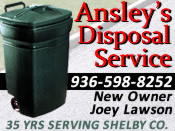July 23, 2015 - The Federal Emergency Management Agency provides two main types of assistance following natural disasters, such as the Texas storms, tornadoes, straight-line winds and flooding that occurred May 4 through June 19.
Individual Assistance is provided by the Federal Emergency Management Agency (FEMA) to individuals and families who have sustained losses due to disasters.
- Texas homeowners, renters and business owners in designated counties who sustained damage to their homes, vehicles, personal property, businesses or inventory as a result of the May 4 through June 19 severe storms and floods may apply for disaster assistance.
- Disaster assistance may include grants to help pay for temporary housing, emergency home repairs, uninsured and underinsured personal property losses, and medical, dental and funeral expenses caused by the disaster, along with other serious disaster-related expenses.
- Disaster assistance grants are not taxable income and will not affect eligibility for Social Security, Medicaid, medical waiver programs, welfare assistance, Temporary Assistance for Needy Families, food stamps, Supplemental Security Income or Social Security Disability Insurance.
- As a FEMA partner, the U.S. Small Business Administration (SBA) offers low-interest disaster loans to businesses of all sizes, private non-profit organizations, homeowners and renters. SBA disaster loans are the primary source of federal long-term disaster recovery funds for disaster damages not fully covered by insurance or other compensation. They do not duplicate benefits of other agencies or organizations.
Public Assistance can fund the repair, restoration, reconstruction or replacement of a public facility or infrastructure damaged or destroyed by a disaster.
- FEMA will provide a reimbursement grant of 75 percent of eligible costs, with the state and local governments sharing the remaining 25 percent of costs. Eligible entities include state governments, local governments and any other political subdivision of the state, Native American tribes and Alaskan Native Villages. Certain private nonprofit organizations, such as educational, utility, irrigation, emergency, medical, rehabilitation, and temporary or permanent custodial care facilities also may receive assistance.
- Although funds are awarded to government entities and nonprofits, the Public Assistance program is intended to benefit everyone — neighborhoods, cities, counties and states. Public Assistance dollars help clean up communities affected by disaster-related debris, repair the roads and bridges people use every day getting to work and school, put utilities and water systems back in order, repair hospitals and emergency services, rebuild schools and universities, and restore playground equipment in public parks.









